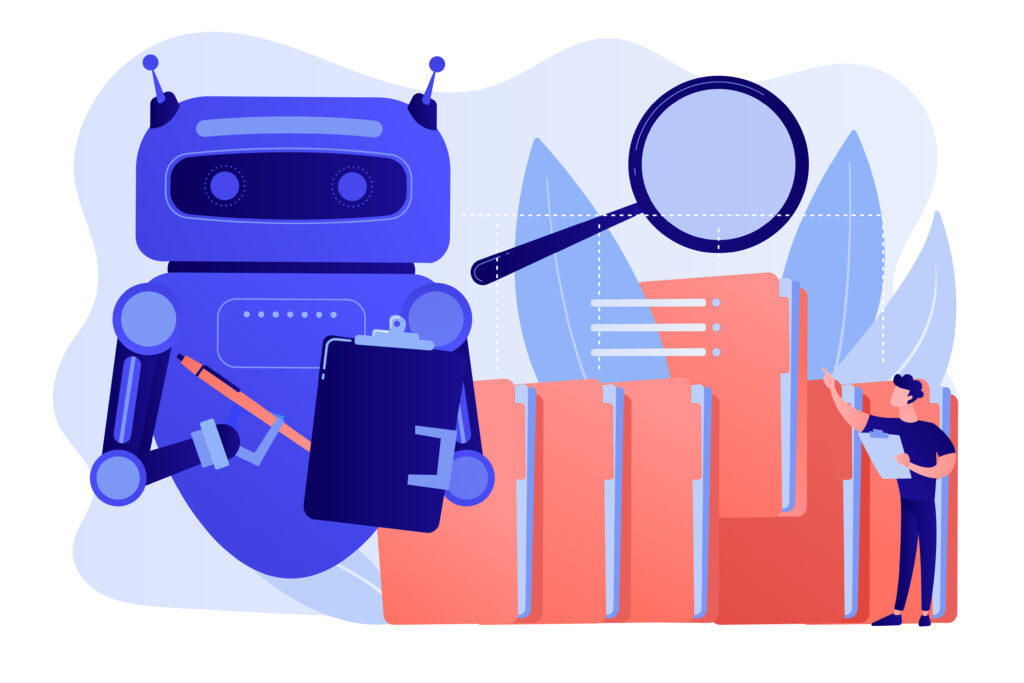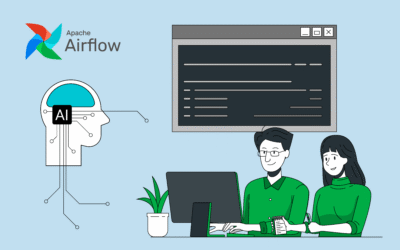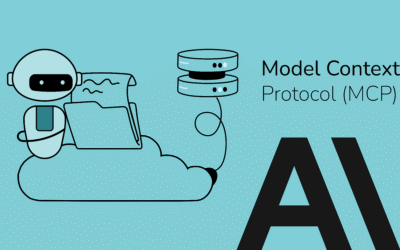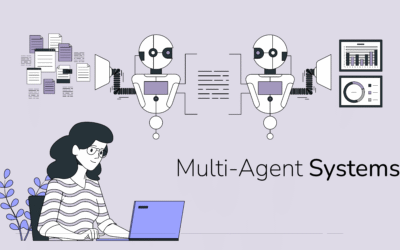Table Of Content
- Business AI
- What is an AI plugin?
- What are Semantic Functions?
- Semantic Functions for Business Operations
- Semantic Kernel Skills
- Tools that Work with Semantic Kernel
- Semantic Kernel Pipeline—Orchestrate plugins with AI
- Semantic Completion and Semantic Similarity
- Semantic Completion
- Semantic Similarity
- What are Embeddings?
- Why Make a Kernel with Embeddings?
- Embedding Services and Their Usage
- Overcoming the Challenges of Adopting AI
- References
Integrate LLM Technology into your Apps using Semantic Kernel. Aligning your business with LLMs can improve costs and efficiency.
Semantic Kernel is an open-source AI platform orchestrator that enables the integration of AI plugins (code) with large language models (LLMs). It facilitates the automation of business processes and decision-making by allowing AI agents to perform tasks that typically require human intervention. It simplifies working with LLMs, vector databases, and prompt templates.
Functions are the first step in creating AI plugins or code to solve business problems. A function is a specialized tool for working with semantic functions and scaling AI systems.
Business AI
The following sections explore how Semantic Kernel can transform businesses by automating routine tasks and enhancing decision-making through practical applications. This article claims to familiarize business users with Semantic Kernel concepts from a business perspective rather than a technical one.
At Krasamo, we help clients design the right combination of business processes and generative AI technologies and contribute to their AI strategy consolidation.
What is an AI plugin?
AI plugins are add-ons, extensions, or code components that extend or add features to perform specific tasks or integrate services without altering the application’s core architecture. They automate tasks that create triggers and actions that work with applications in a business context.
What are Semantic Functions?
Semantic functions are specialized operations or methods that process data by understanding and leveraging its inherent meaning rather than just its raw form. These functions are integral to complex computational tasks requiring context-aware processing, such as natural language understanding, decision-making support, and sophisticated data analysis. Semantic functions enable Semantic Kernel to interpret and respond to queries in a manner that aligns closely with human cognitive processes, making them essential for applications where accurate and context-sensitive interpretation is critical.
Semantic Functions for Business Operations
Semantic functions enable AI engineers to rapidly develop proofs of concept and transition them into production quickly and easily. They are versatile tools for processing information related to operational challenges and business strategies, such as SWOT analysis, insights on efficiency (time and costs), product design, social media feedback, sentiment analysis, and more.
By analyzing data, businesses can identify patterns that help achieve their goals, such as reducing costs and enhancing products and operations. Semantic functions developed within a business context can be transferred to other domains, modified for different audiences, or adapted to new conditions to solve problems swiftly.
Enterprises that develop semantic functions and AI capabilities are enhancing efficiencies and gaining experiences that foster growth and set them apart from the competition. These functions and prompt templates are designed for creating plans and are easily reused to meet specific objectives, empowering the organization to continue innovating.
For example, the output from one function can be used as the input for others to generate tasks automatically. This data serves as a basis for defining problems or analyzing further issues, invoking multiple functions, and integrating them within a Kernel.
The Semantic Kernel facilitates the orchestration of functions to manage various scenarios or utilize strategic planning tools. This helps anticipate future market trends, assess the viability of strategic positions, influence product development, or recommend necessary adjustments.
These functions and workflows are derived from business-centric thinking and operational logic to create plugins that function within specific contextual details. All these workflows are methodically structured into a Kernel pipeline and organized to allow future adaptations simply by modifying the plugin to address specific problems.
To build fully automated business processes, you need a framework like Semantic Kernel to take responses from models and call functions to create a productive output.
A generative AI developer can assist in creating AI plugins and constructing workflows using the Kernel. Krasamo developers are equipped to help integrate functions into your code, utilize native functions, orchestrate plugins, and develop prompt and packaging templates.
Our engineers are skilled in utilizing open-source SDKs for large language models (LLMs) and have expertise with platforms like Azure AI Studio, Copilot Studio, OpenAI, GCP, and Hugging Face.
Semantic Kernel Skills
Skills in Semantic Kernel are modular, executable functions that encapsulate specific business logic or AI capabilities. They are designed to be independently deployable and directly address an application’s particular use cases or operational needs. The concept aligns with the broader usage of “skills” in AI platforms, such as virtual assistants, where skills might include booking appointments, fetching weather forecasts, or integrating with smart home devices.
Characteristics of Skills
- Modularity: Skills are standalone, meaning they can be developed, tested, and deployed independently of the core application, making them highly reusable and adaptable.
- Purpose-specific: Each skill is designed for a specific function. For instance, in a business context, a skill could handle tasks like processing a sales transaction, generating a report, or providing customer-specific recommendations.
- Integration Capability: Despite their standalone nature, skills are designed to integrate seamlessly with other parts of the AI system or even external systems, enhancing the overall functionality of Semantic Kernel.
- Customization and Scalability: Skills can be customized to meet the changing needs of the business and scaled to handle different volumes of requests or operational complexities.
Application of Skills
In practical terms, deploying skills within Semantic Kernel allows organizations to enhance their AI-driven applications by adding specific functionalities that can be dynamically invoked as needed. This modular approach helps keep the core system lean and flexible while extending its capabilities through targeted skills.
These skills, therefore, represent a crucial element of Semantic Kernel’s architecture, providing a method for extending the platform’s capabilities in a controlled and efficient manner. They allow businesses to tailor their AI solutions to their needs without overhauling the entire system, thereby maintaining agility and responsiveness in their operations.
Skills might be used to describe packaged AI capabilities that can be applied to various user interactions or scenarios, such as processing natural language queries or integrating with business databases. Skills are about what the system can do for the user on a more visible level.
Functions refer to the individual operations that underpin these skills, such as fetching data, parsing input, or generating responses. They are about how skills are technically implemented on a lower level.
Tools that Work with Semantic Kernel
Semantic functions can be edited directly within the text editor. Various tools enhance the development and management of applications using Semantic Kernel by providing versatile environments for editing, running, and testing these functions.
- Visual Studio. Visual Studio IDE is primarily used for prompt tuning and development within the Semantic Kernel environment. Its integration streamlines coding, debugging, and testing, enhancing code readability and accuracy through features like auto-completion and error highlighting.
- Jupyter Notebooks. Jupyter Notebooks provides an interactive environment that merges code, output, and multimedia into a single document. This tool is perfect for experimenting with semantic functions, visualizing data, and facilitating collaboration with live code and detailed documentation.
- Azure Data Studio. Azure Data Studio enhances Semantic Kernel by providing advanced database management and collaboration tools. Its capabilities include handling SQL data and managing PowerShell scripts to optimize and maintain Semantic Kernel environments, improving deployment and operational efficiency.
- PowerShell. PowerShell is crucial for automating the Semantic Kernel application’s setup, deployment, and management. Its seamless integration with Azure enhances system customization and scalability while ensuring robust performance and system reliability.
- Copilot Studio. Copilot Studio uses Semantic Kernel as a foundational SDK, enabling developers to build AI-driven agents for varied scenarios. It facilitates various actions, such as sending emails and updating databases, and provides a user-friendly interface for managing interactions between AI models and application infrastructure.
- Azure AI Studio. Integrating Semantic Kernel with Azure AI Studio maximizes its orchestration capabilities for efficiently managing complex AI workflows. This setup enables prompt-based AI models to engage with users effectively, using extensive resources to scale applications and handle high user volumes without sacrificing performance.
- Qdrant. Qdrant is a vector database that facilitates efficient storage, management, and retrieval of high-dimensional vector data. This data type commonly arises in applications involving machine learning models, particularly those that deal with embeddings.
- Chroma. Chroma is an open-source database specifically designed for managing and storing embeddings. It facilitates the development of applications powered by large language models (LLMs) by enabling these models to effectively handle, retrieve, and utilize knowledge, facts, and skills. This integration makes Chroma a vital tool for developers looking to enhance AI applications with rich, pluggable content that can dynamically interact with varied datasets.
Semantic Kernel Pipeline—Orchestrate plugins with AI
A kernel pipeline is a sequence of processing steps or operations applied to data or tasks. Each step in the pipeline is designed to perform a specific function and pass its output as the input to the next step in the sequence.
Kernel pipelines are essential for managing complex processes in a structured and efficient manner. They ensure that each component operates optimally within the system’s architecture. They provide a systematic approach to handling tasks that require multiple, sequential operations, often improving system performance, scalability, and maintainability.
In this context, a “kernel” often refers to a core component or system that manages these operations efficiently. Here’s a brief Kernel pipeline overview:
- Data Input: Begins with various forms of data, including real-time user interactions, which are essential for responsive AI applications.
- Processing Stages: Data undergoes multiple processing layers, such as cleaning, analysis, and feature extraction, each handled by different plugins within Semantic Kernel.
- AI-Specific Operations: Beyond general processing, Semantic Kernel uniquely manages AI tasks like model training and inference, effectively utilizing its modular pipeline structure to adapt and scale operations as needed.
- Output Generation: The processed information is then compiled into actionable insights or direct outputs, ready for use within business applications.
- Feedback for Optimization: Outputs are also used to refine processes, enhancing accuracy and performance through continuous learning mechanisms.
This approach streamlines GenAI operations and ensures that Semantic Kernel applications remain adaptable and powerful, ready to meet the demands of complex AI challenges.”
Semantic Completion and Semantic Similarity
Understanding these concepts is essential when designing solutions for your business. Semantic completion and semantic similarity can be used together in an equation. Use the output from completed LLMs and reuse them with a similarity engine.
Semantic Completion
Semantic completion refers to the process by which AI systems complete a given piece of text in a contextually and semantically coherent way. This process leverages deep learning models and large datasets to predict and generate text that logically continues from or complements the provided input.
In the context of the Semantic Kernel, semantic completion might involve using a combination of language models and specific business logic to automate the generation of text that fits within a certain context, such as customer service interactions, content creation, or data annotation tasks. This capability is essential for applications requiring human-like text responses, ensuring the outputs are grammatically correct and contextually appropriate to the given situation.
- Enhanced User Experience: Semantic completion technologies can greatly improve the user experience in digital products. Systems can save users time and reduce cognitive load by accurately predicting and completing user inputs, leading to a smoother and more satisfying interaction. This is particularly valuable in user interfaces for search functions, virtual assistants, and content creation tools.
- Increased Productivity: In corporate environments, semantic completion can streamline many tasks. Whether it’s drafting emails, presentations, generating reports, or coding, having an intelligent system that can suggest completions and reduce the amount of typing can increase employee productivity and allow them to focus on more strategic tasks.
- Scalability of Content Creation: For businesses that generate a lot of content, semantic completion can help scale up their content creation processes. By providing suggestions and auto-completing text sections, the technology can assist content creators in maintaining a consistent voice and quality while producing content faster.
Applications of Semantic Completion:
- Chatbots and Virtual Assistants: Improving responsiveness by generating coherent, contextually appropriate responses.
- Content Creation Tools: Assisting in drafting documents, emails, and reports by automatically completing sentences.
- Programming Assistants: Completing lines of code or suggesting code blocks in integrated development environments (IDEs).
Semantic Similarity
Semantic Similarity measures the likeness of meaning between two segments of text. This can be quantified using various techniques, such as vector space models where texts are converted into vectors, and the cosine similarity between these vectors indicates their semantic closeness.
The Similarity Engine is responsible for finding relevant information from a knowledge base or other data sources to augment the input prompt. It uses semantic similarity algorithms and other statistical measures to compare the input prompt with the available knowledge sources and retrieve the most relevant information.
The Similarity Engine can retrieve relevant passages, documents, or other structured data to enrich the input prompt. It continuously processes and compares data based on predefined semantic metrics to determine their similarity.
This functionality is crucial for applications like search engines, recommendation systems, content filtering, marketing, customer support, and more, where finding related content based on meaning rather than just keyword matches can significantly enhance the user experience and system effectiveness.
Retrieval Augmented Generation (RAG)
You can use semantic completion with semantic similarity, particularly in applications that require content generation and assessment of its relevance or similarity to a given standard, context, or reference text. The idea is to maintain consistency with predefined data.
Combining the Completion and Similarity engines in Semantic Kernel (semantic kernel rag)is a key aspect of creating a Retrieval Augmented Generation (RAG) application. Let’s dive into how these two components work together to connect context with completion:
- In a RAG application, the Completion Engine and the Similarity Engine work together to create a more informed and contextual response.
- The Similarity Engine first retrieves the most relevant information from the knowledge base based on the input prompt.
- This retrieved information is then incorporated into the input prompt, creating an augmented prompt that combines the original context with the relevant external knowledge.
- The Completion Engine then generates the final output based on the augmented prompt, leveraging the additional context provided by the Similarity Engine.
Combining the Completion and Similarity engines in Semantic Kernel enables the creation of RAG applications that provide more accurate, relevant, and contextual responses. The application can generate better-informed responses tailored to the user’s needs by connecting the current context with relevant external information.
This approach is particularly useful in scenarios where the language model alone may not have sufficient knowledge or context to generate a satisfactory response. Integrating external information can significantly improve the quality and relevance of the output.
What are Embeddings?
Embeddings are numerical, vector representations of data typically used to map text, images, or other input types into a continuous, high-dimensional space. In the context of text data, embeddings capture semantic properties, meaning that words or phrases with similar meanings are placed closer together in the vector space. This feature allows machine learning models to process and understand complex semantic relationships efficiently.
Why Make a Kernel with Embeddings?
Incorporating embeddings into a kernel can significantly enhance its capability to handle, analyze, and interpret large volumes of data semantically.
Embeddings are crucial for a kernel to grasp the meaning of inputs and speed up operations like search, classification, and clustering within the kernel. They can be applied across different types of data and tasks, making them incredibly versatile for integrating various AI functionalities into the kernel.
Embedding Services and Their Usage
Embedding services are specialized components or tools that generate embeddings from raw data. They convert textual data into vectors, store this information in a structured format like a Memory Store, and manage the lifecycle of these embeddings to ensure they are current and useful.
Embedding-driven models can predict missing parts of data or suggest completions in user interfaces, leveraging the semantic understanding encapsulated in the embeddings. They can also find and recognize similar items based on their embedding distances.
Embeddings are a foundational component in modern AI systems, particularly within kernels that aim to process and understand large amounts of data semantically. Embedding services enrich the kernel’s capabilities and bridge the gap between raw data and actionable insights, enhancing both the completion and similarity aspects of data processing.
You can attach embedding services to the kernel to convert data to its vector form and implement a storage solution (Memory Store) to store and retrieve the embedding vectors. The storage must handle high-dimensional data and provide fast access times for the embedding vectors. The embeddings are connected to the Kernel via APIs or middleware, allowing integration (API endpoints) into business applications.
Overcoming the Challenges of Adopting AI
While the benefits of leveraging Semantic Kernel and integrating AI capabilities into your business are clear, we understand that the journey to becoming an AI-driven enterprise comes with challenges. Two key hurdles often faced by organizations are the availability of technical talent and cultivating a culture of innovation.
Finding and retaining skilled AI and machine learning engineers can be a significant obstacle. Additionally, successfully deploying AI solutions requires technical know-how and a deep understanding of aligning these capabilities with specific business needs and workflows.
Furthermore, transitioning to an AI-powered model requires cultural change within the organization. Employees may resist new technologies or need guidance on effectively incorporating them into their day-to-day responsibilities.
Nurturing an environment that embraces experimentation, learning, and continuous improvement is crucial for realizing the full potential of AI investments.
This is where partnering with an experienced AI integration firm like Krasamo can be invaluable. Our team of experts and generative AI developers can augment your internal resources, providing the technical expertise, business acumen, and change management support needed to accelerate your AI adoption journey.
By collaborating with Krasamo, you can:
- Rapidly prototype and deploy AI solutions tailored to your unique business challenges
- Upskill your teams and instill a culture of AI-driven innovation
- Optimize processes and workflows to maximize the impact of your AI investments
- Maintain a competitive edge by continually evolving your AI capabilities
Take the Next Step
If you’re ready to explore how Semantic Kernel and other AI technologies can transform your business, we invite you to schedule a discovery call with our team. We’ll work closely with you to assess your current state, define your desired outcomes, and develop a roadmap to bring your AI vision to life.
Contact us today to get started.












I must commend you on highlighting the benefits of integrating Semantic Kernel into business operations. However, I’d like to suggest exploring its potential for automating repetitive tasks rather than just suggesting completions. This could lead to significant improvements in employee productivity and task efficiency.